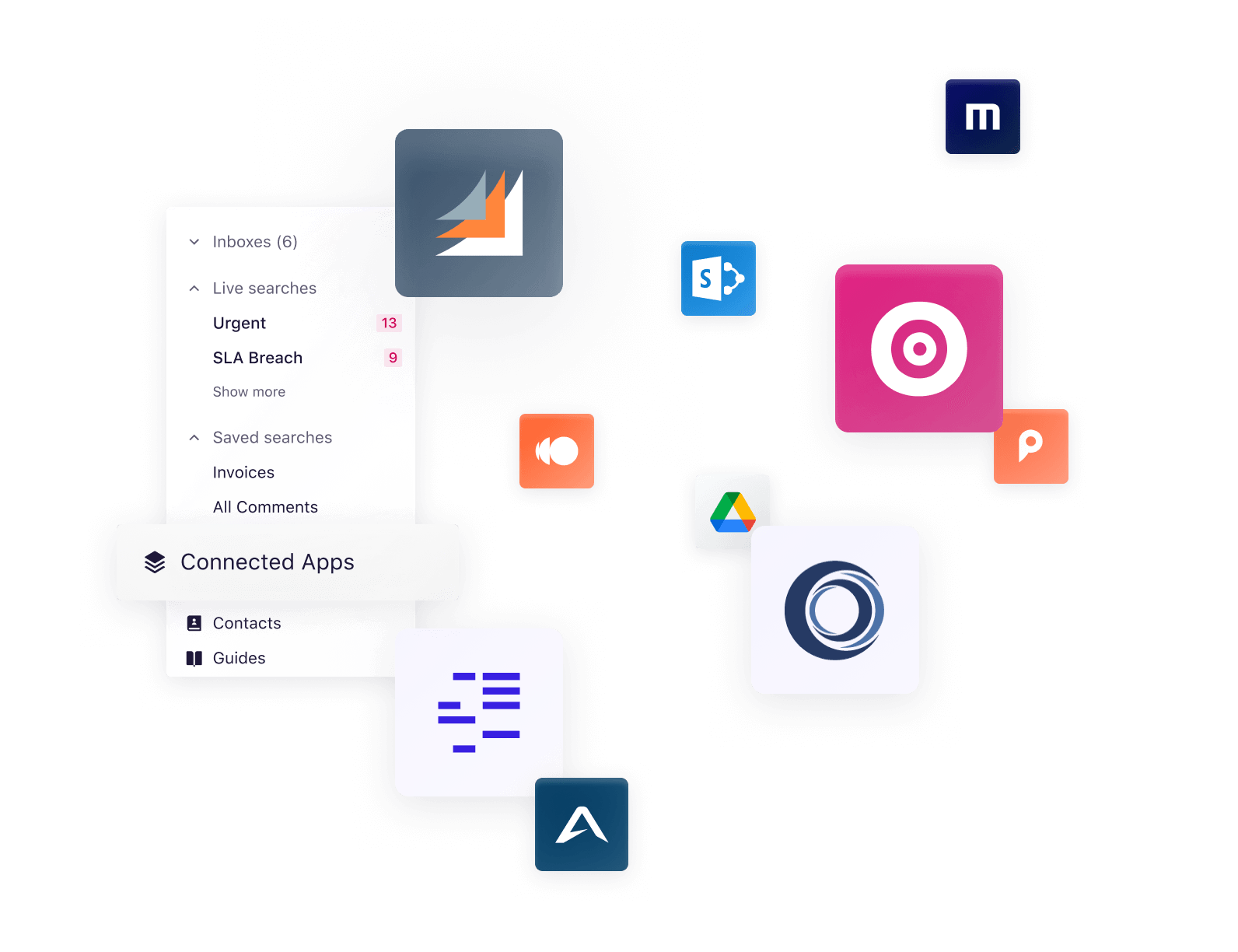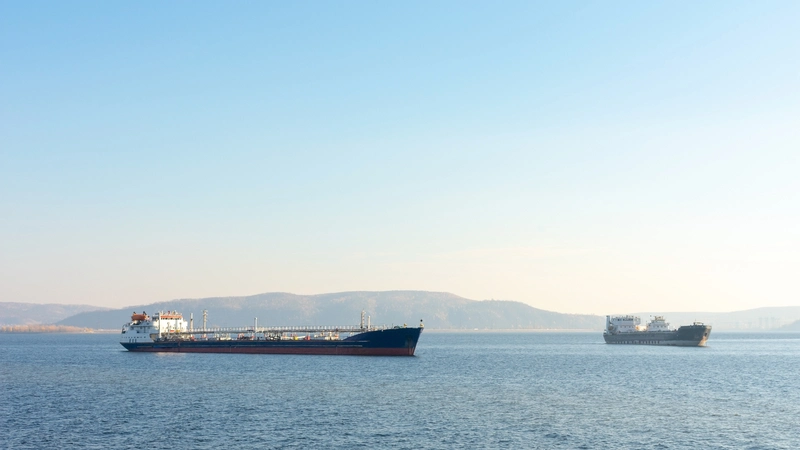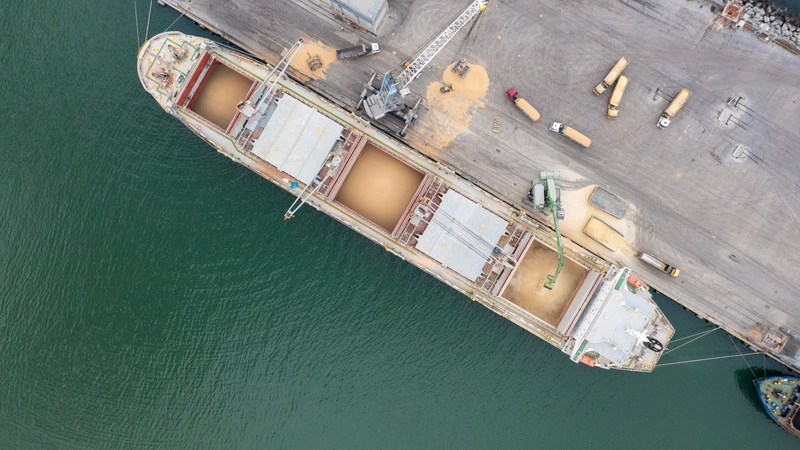Driving digital transformation with maritime analytics
As you move past the first steps of maritime digital transformation, you want your business to do more with digital tools and set new standards in the industry. So the focus now shifts to exploring more advanced technologies such as maritime analytics.
To drive your digital agenda forward, let's understand the impact of data analytics and its role in transforming the maritime and shipping sectors.
The rise of data analytics in the maritime industry
According to McKinsey, early adopters of AI-enabled supply-chain management have seen a 65% increase in efficiency compared to their slower-moving competitors. This shift towards automation in the maritime industry has also opened the door for the integration of analytics and data management.
Here are the factors that led to the rise of maritime analytics:
- Push for digital transformation: The shipping industry's increased adoption of digital solutions, driven by the need to enhance productivity and operational efficiency, has made maritime analytics indispensable. This digitalisation trend gains momentum with the sector's readiness to streamline processes, bolster security, and slash operating costs.
- Global trade dynamics: The maritime industry, crucial for transporting over 90% of international trade, has faced growing complexity in its operations. This expansion requires sophisticated data analysis for efficient logistics and supply chain management, highlighting the importance of data analytics in the maritime industry.
- Technological evolution: Breakthroughs in AI, big data analytics, and machine learning have enabled deeper insights into maritime operations, leading to more precise predictive maintenance, route optimisation, and risk assessment.
- Pandemic-induced acceleration: COVID-19's impact on global maritime and supply chain networks emphasised the need for resilient and adaptable operational strategies. Maritime data analytics was pivotal in addressing these challenges, offering data-driven insights to navigate disruptions and maintain operational continuity.
- Operational efficiency and safety: As demand for faster, more reliable, and safer shipping services escalated, the sector turned to data-driven solutions. Maritime analytics addresses this need by simplifying fleet management, optimising cargo tracking, and strengthening safety protocols.
- Market competitiveness: Companies are turning to analytics to gain a strategic edge in an increasingly competitive maritime sector. By leveraging data, firms make informed decisions, optimise their operations, and position themselves more effectively in the market.
💡Discover the top maritime industry trends to watch for in 2024.
What role can data analytics play in the maritime industry?
Research in the Journal of Marine Science and Engineering shows that, despite improvements in digitisation over recent years, about 80% of ports still predominantly rely on manual, legacy solutions for their operations. With data analytics in the maritime industry, you can bridge the gap between traditional methods and modern, efficient operations.
With advancements in maritime data analytics, enterprises are:
1. Minimising pricing with predictive planning
Shipping data analytics leverages AI and machine learning to sift through vast data, including market trends, weather patterns, and global economy and maritime trade flows. By doing so, it identifies optimal pricing points, adapting dynamically to changes in supply and demand. This capability allows shipping businesses to maximise revenue while remaining competitive.
Analytics also provide actionable business intelligence to reduce operational costs by systematically analysing performance metrics such as fuel consumption, engine efficiency, and navigational patterns.
2. Streamlining port operations
By analysing patterns in vessel arrivals, departures, and dock usage, analytics tools enable ports to schedule docks more efficiently. The data-driven approach ensures that docks are allocated based on actual demand and vessel types, leading to a smoother flow of cargo and reduced congestion.
Maritime data analytics also aids in predicting cargo volumes and types, allowing port operators to allocate resources more effectively. This foresight enables proactive adjustment of shipping schedules, avoiding congested ports and capitalising on less busy routes.
3. Validate communication efficiency
The quality and rate at which internal teams respond to customers is key to customer satisfaction within maritime. Data analytics that provides information on response rates, internal team efficiency and workload by team and by voyage is crucial in dictating SLAs, KPIs and OKRs. The more accurate these agreements and goals are upheld, the better the customer relationship.
At Sedna, our analytics feature allows users to report on the efficiency of their communications, validate SLAs and improve customer relationships.
4. Optimising cargo tracking
Gartner forecasts that by 2024, 50% of supply chain organisations will invest in applications that support artificial intelligence and advanced analytics capabilities. Enhanced cargo tracking is another critical application.
Real-time data analytics enables maritime companies to monitor cargo movement accurately, ensuring security and timely delivery. This real-time monitoring is about more than just tracking the location of your cargo and shipments. It involves assessing environmental conditions, security risks, and logistical challenges, leading to proactive decision-making.
5. Improving safety and supply chain transparency
The integration of maritime data analytics into supply chain management offers unprecedented transparency. Stakeholders track the real-time status of shipments, anticipate potential delays, and make informed decisions. This level of transparency is invaluable for managing complex logistics operations, allowing for better coordination and more agile responses to changing market conditions.
By employing predictive models, shipping companies proactively alter routes or take precautionary measures, reducing the risk of incidents. This capability is crucial not only for safeguarding assets but also for ensuring the safety of crew and cargo.
6. Enhancing fleet management
Maritime data analytics leverages advanced technologies to monitor vessels' real-time conditions and usage patterns. Sensors installed on ships collect data on various parameters, such as engine performance, fuel consumption, and equipment status. For instance, predictive maintenance models, informed by data analysis, preempt equipment failures, ensuring vessels operate at peak capability.
This integration of continuous data analysis and predictive modelling transforms fleet management, making it more responsive, efficient, and preemptive against potential issues, enhancing safety and sustainability in maritime operations.
🚢 Read why maritime digital transformation starts in your inbox.
Advance your maritime data analytics progress with Sedna
Sedna's platform Pulse is poised to be a game-changer for maritime companies looking to advance in digital transformation and data analytics. Pulse offers seamless integration, consolidating emails and data into one centralised view, which enhances decision-making by highlighting critical information.
The platform is empowered by Sedna AI and strategic partnerships, bringing advanced maritime analytics into play. With AI email management, Sedna enables maritime companies to respond quickly to changing circumstances, prioritise tasks efficiently, and extract valuable insights from their communications.
Latest resources
Driving faster action and insights from your core business system
Connected Apps integrate business-critical data hidden across your digital ecosystem. Make informed decisions without needing to switch contexts or systems.






